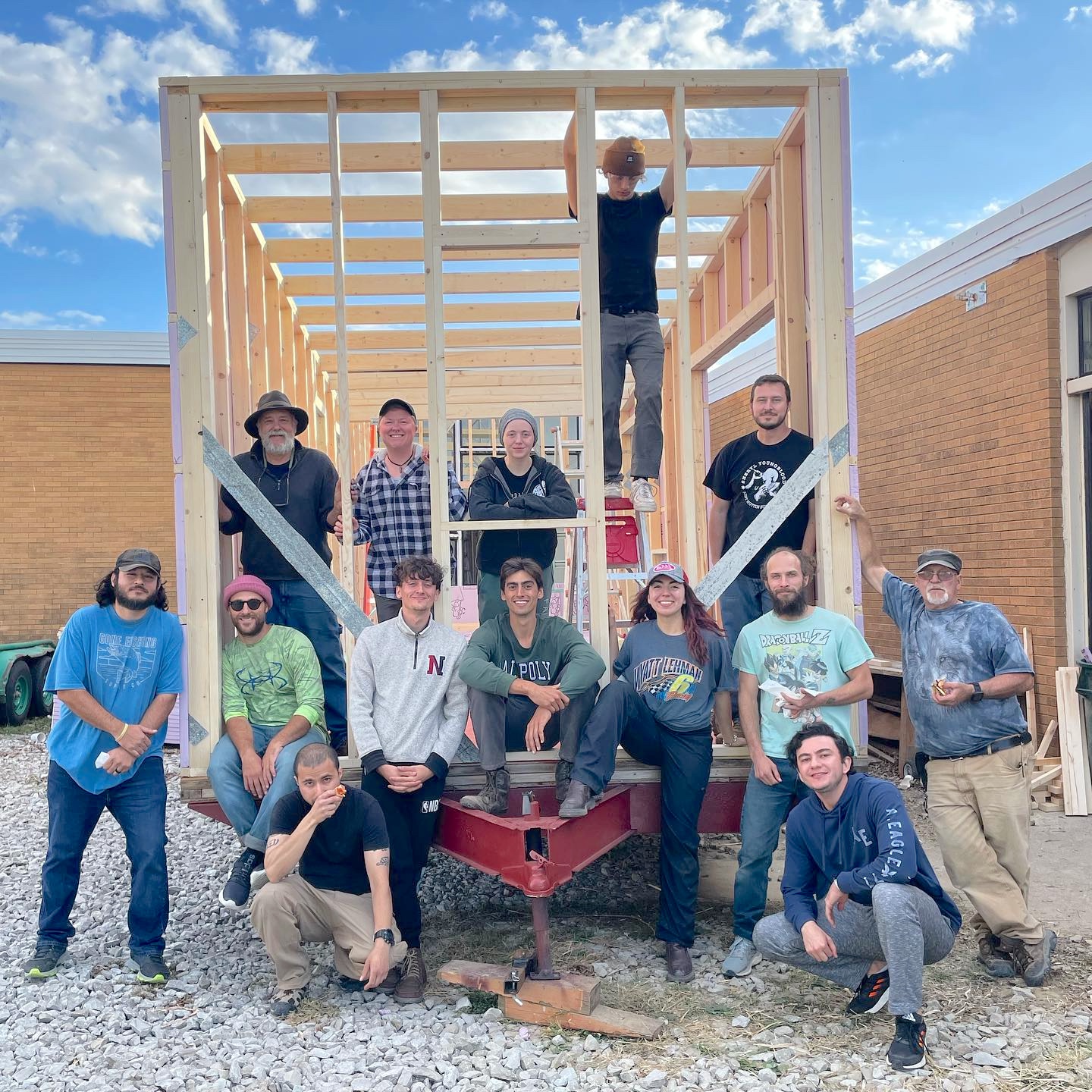
Three days to a tiny house
In just three days, a group of eleven students and two community members framed a complete 320-square-foot tiny house while also designing their own tiny house floor plans.
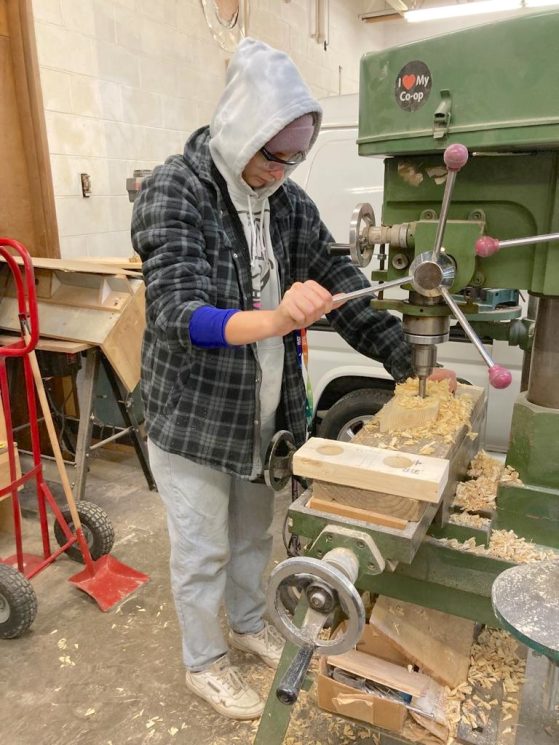
“Working with a group hands-on is one of the best ways to learn, and I feel like I got that from this workshop!” said Lauren Saeger, who is studying Sustainable and Regenerative Living and Cinematic Arts and New Media at MIU.
The workshop, entitled “How To Frame A Tiny Home” and held at MIU’s Sustainable Living Workshop, began Thursday evening, October 5, and continued through Sunday, October 8.
The instructor was Mark Stimson, master builder and chair of MIU’s Sustainable and Regenerative Living department.
Stimson’s typical tiny house building course is two months long, and students carry the process through to a finished, ready-to-move-into house, including electrical, plumbing, and HVAC systems. He has taught five of these so far, and they are among MIU’s most popular undergraduate courses, always fully enrolled and drawing students from a variety of majors. His next course, in May and June 2024, has already reached its maximum enrollment.
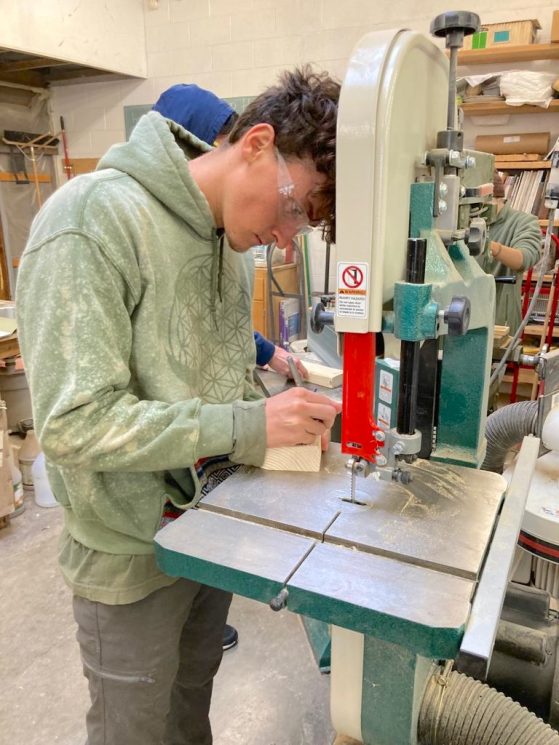
But he had never done a crash course like this before.
The Thursday evening introductory session was free and open to all. Then followed a three-day intensive weekend workshop. Participants spent the morning and afternoon sessions doing practical, hands-on building and framing of the tiny home and evening sessions diving into theory and design.
Class sessions were 8:30–12:00 and 1:30-4:30 on Friday, Saturday, and Sunday, with evening sessions Friday and Saturday from 7:30-9:00.
“The instructors are extremely knowledgeable, and very patient with the students,” said Pierre Diaz, a Regenerative Organic Agriculture student. “Everyone had a chance to work on all aspects of the build. Can’t wait for the next workshop.”
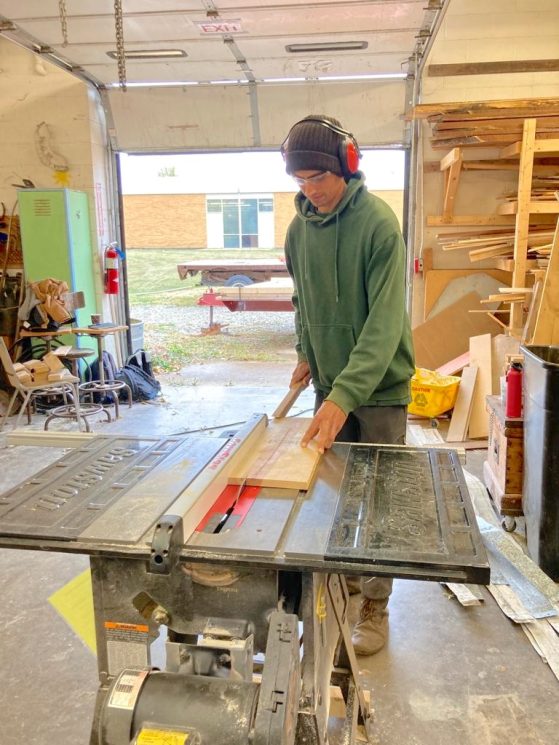
Many students had never worked with power tools. “They bring both fear and respect for power tools into the class,” Stimson said. “But we start by learning how to use the tools safely and properly. Students lose their fear but keep their respect. It just amazed me how quickly they were able to turn around and do full-on professional-quality work.”
The course was “well worth every penny,” said Shawn Daudi, an MIU alum and professional engineer. “It was both fun and rich with knowledge.”
It was valuable for those at both ends of the experience spectrum, Shawn added. “The course is definitely comfortably paced for beginners who have never even held a hammer in their life and who might want to try something new for fun, but in my opinion, it can also be considered an excellent professional development course for anyone in the trades. As an engineer, I feel like this course broadened my skillset, and I feel more confident in my construction ability.”
“The only issue I had was that the workshop ended too soon!” he said. “I had so much fun and the people in the class were an absolute pleasure to share this experience with. I’m looking forward to the next one.”
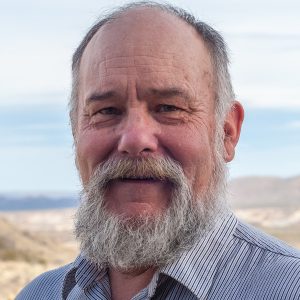
“Hands-on learning has always been an important feature in our classrooms in Sustainable and Regenerative Living,” Stimson said. “Our courses and workshops on building tiny houses take this pedagogy to the max. Many of our students come into the course with minimal or no practical skills, some not knowing even which way to turn a screwdriver.”
But by the end of the second week of his longer courses, he says, “They are doing professional-quality work.”
“The transformation in them is amazing to watch, going even to the level of their physical bearing, core attitudes, and newfound self assurance. By combining this hands-on approach with meaningful academic challenges we provide an ideal learning environment. Head, hands, and heart, as the saying goes. I think all education should integrate hands-on and project-based learning into their pedagogies and curricula.”

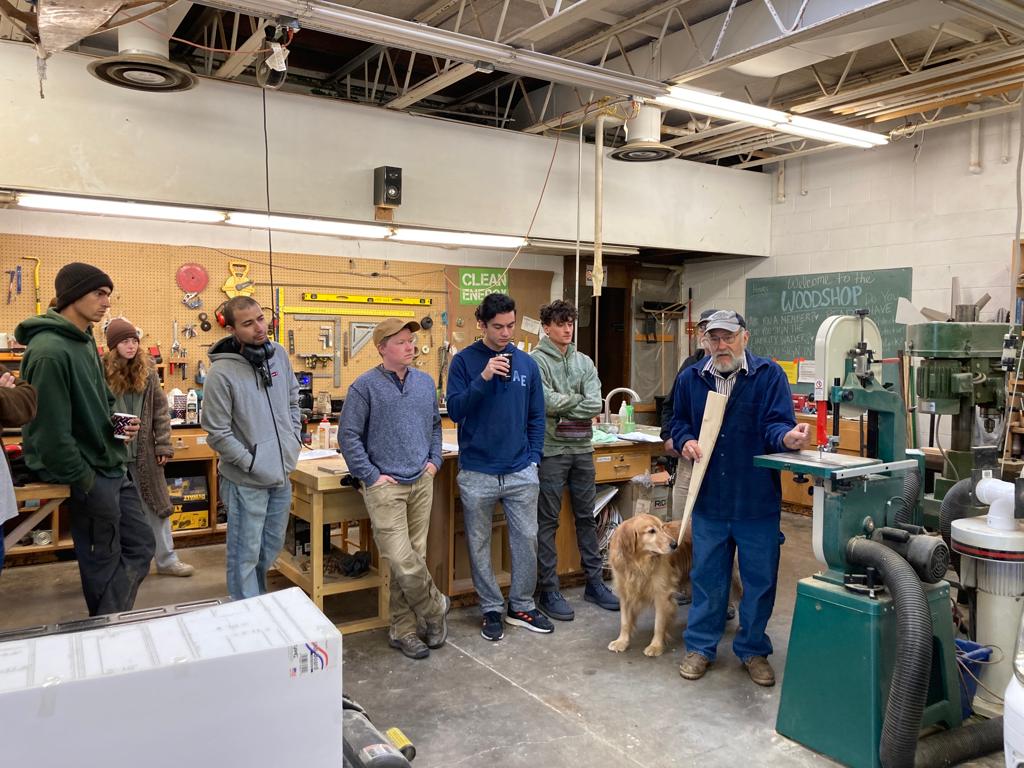
Thank you to Mark Stimson and Shreya Sood for their contributions to this story.
